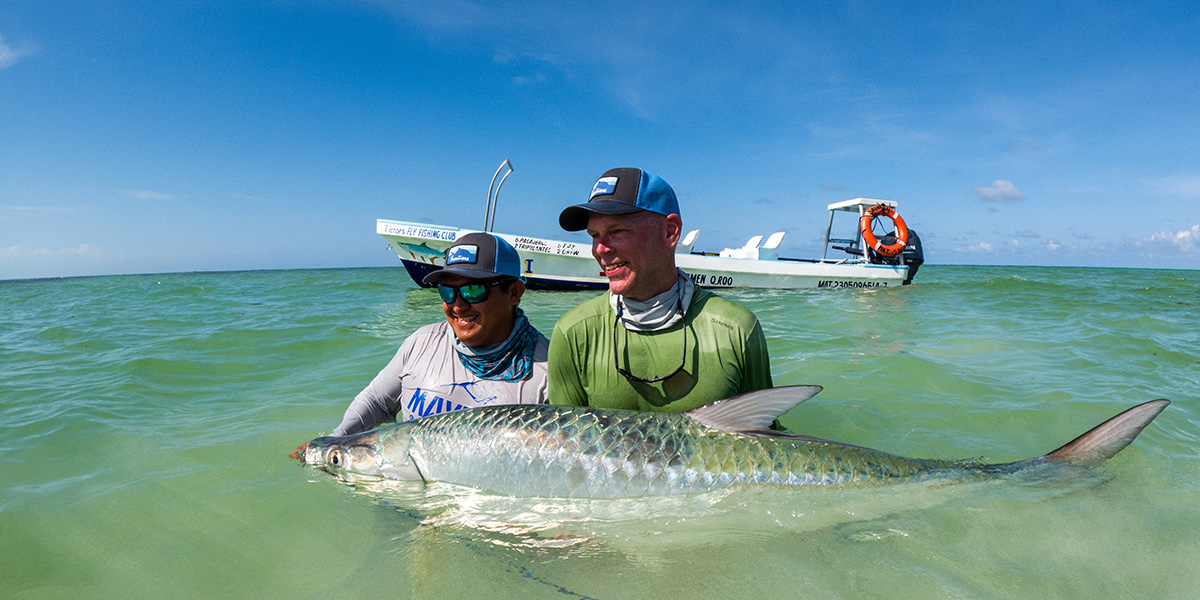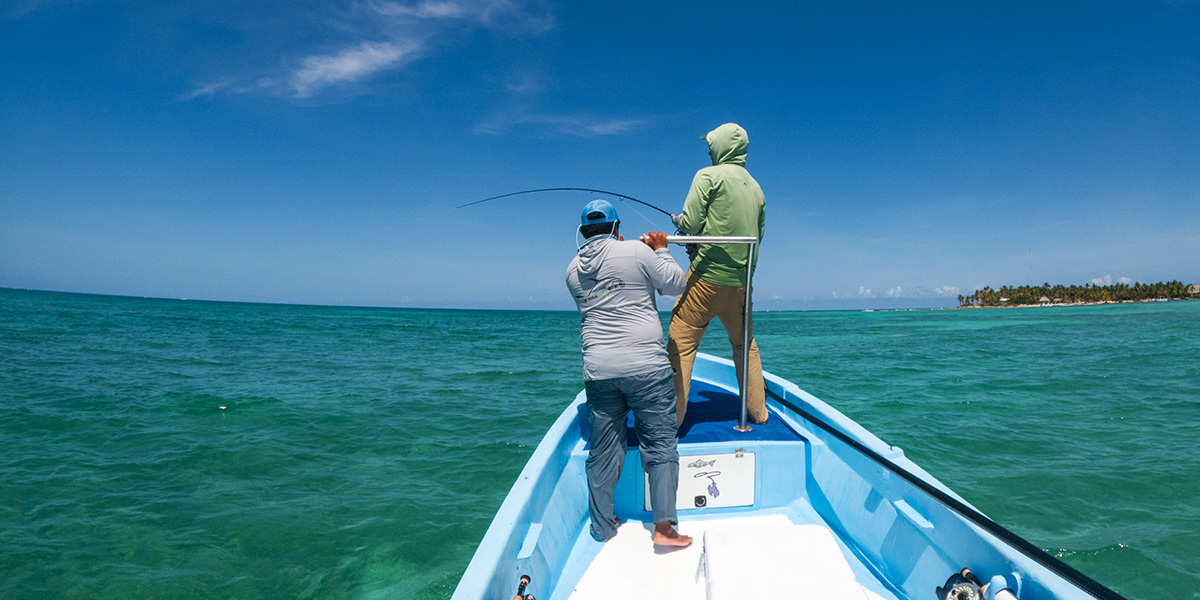The Physics of Fishing: Isaac Newton’s Laws in Action with a 140-Pound Tarpon

Isaac Newton – Tarpon Fisherman?
Sir Isaac Newton must have been a tarpon fisherman. I have no solid evidence of this, but I am convinced that his Laws of Motion were inspired after an epic battle with one of these fish. This conclusion is obvious, but one that I have only come to after I recently put his theories to the test in Ascension Bay, Mexico.
Newton’s first law of motion states that the acceleration of an object depends on its mass and the amount of force applied to it. This law came vividly to life when a massive migratory tarpon inhaled my black tarpon toad fly. With the drag on my Orvis reel cranked all the way down, I expected the usual acrobatic jumps that tarpons are known for. However, this one had other plans. Instead of leaping, it lifted its head out of the water, looked directly at me, and then took off towards Africa at full speed. Instantly, my fly line vanished, and the backing rapidly followed. This colossal aquatic muscle applied its maximum force to my fly rod, and despite my efforts, I couldn’t stop its rapid acceleration toward the horizon. Newton’s first law was spot on. I dug my toes into the bow of the panga, bracing myself for the battle that was about to unfold.
But how did this happen? I flew down to the Yucatán at the beginning of June to visit a new lodge called Mayazul in Punta Allen, where I found myself in the midst of the migratory tarpon run. From May through September, these fish migrate from the northern Caribbean to the Gulf of Mexico, with June and July being their peak months in these waters. Our group was fishing during a new moon week, which increased my chances of success since the tarpon wouldn’t be feeding at night and should be hungry during the day. Until this trip, my tarpon experience had been limited to catching smaller baby tarpon, which I enjoyed. However, the opportunity to catch a larger fish piqued my interest.
Moments earlier, my colleague had just landed an 80-pound tarpon, and now it was my turn to take the spot on the bow. I barely had time to ready the line on my Sage 10-weight rod when the guide shouted that a tarpon was approaching the boat. The large form stood out against the white sand, gliding toward me in the clear water. I made a good cast, stripped twice, and watched the tarpon inhale the fly. I set the hook, and the guides erupted in excited screams, declaring it a giant tarpon. Having fished all over the world, I knew that when your guide gets excited about a fish you’ve hooked, it’s indeed a special one. However, I didn’t realize just how special it was and eagerly anticipated finding out.
Isaac Newton also said that for every action, there is an equal and opposite reaction. Twenty minutes into my fight with the massive migratory tarpon, I wasn’t consciously thinking about that law, but I was living it second by second, minute by minute. Every time I pulled and gained line on the reel, the fish pulled equally hard against me, taking it back—Newton was right again. It became a stalemate, a true battle of wills between the fish and me, with neither of us willing to give an inch.
With the rod butt jammed into my hip and both hands gripping the rod, I pulled as hard as I could, engaging every muscle from my feet to my shoulders. I quickly lost track of time, and soon my body began to ache. I realized I had brought a ‘knife to a gunfight’ with my tackle setup. My mind wandered into a dark place, worrying about the strength of my knots, the 80-pound Rio leader, and how my backing strained like an overtightened guitar string. I had a sickening feeling that I might hear a pop, the rod would straighten, and the fish of a lifetime would swim away.
But that did not happen. The guides maneuvered the boat towards the fish, and there, at the end of the long fight, we found the tarpon exhausted. Both the fish and I were worn out after exerting maximum effort in what felt like an hour-long battle. When the tarpon was finally brought to the boat and I saw it clearly for the first time, I was struck by its size—this truly was the fish of a lifetime. I had never seen a fish that large before, let alone hooked one. After a few photos were taken, the guides estimated, based on its length and girth, that the tarpon weighed around 140 pounds. I jumped into the water with her, and she was released, slowly swimming off into the warm tropical waters.
There are countless resources available to help you prepare for landing massive tarpon, like Andy Mill’s Masterclass. However, nothing could have prepared me for the thrill of the fight, the fear of losing the fish, and the pride I felt that day.
I learned that catching a fish like that is all about teamwork. I listened to my guides and followed their instructions throughout the fight. I reeled when they told me to reel, applied pressure when they told me to, and angled the rod to the left or right depending on the tarpon’s movements. It was clear that they wanted that fish as much as I did. Fishing for migratory tarpon requires a certain mindset—you have to be prepared for an experience that is profound, exhausting, and epic all at once. And you don’t have to be Isaac Newton to understand that.
If you’re interested in learning more about fishing in Ascension Bay or pursuing migratory tarpon around the world, feel free to contact me, Ben Hoffman.







